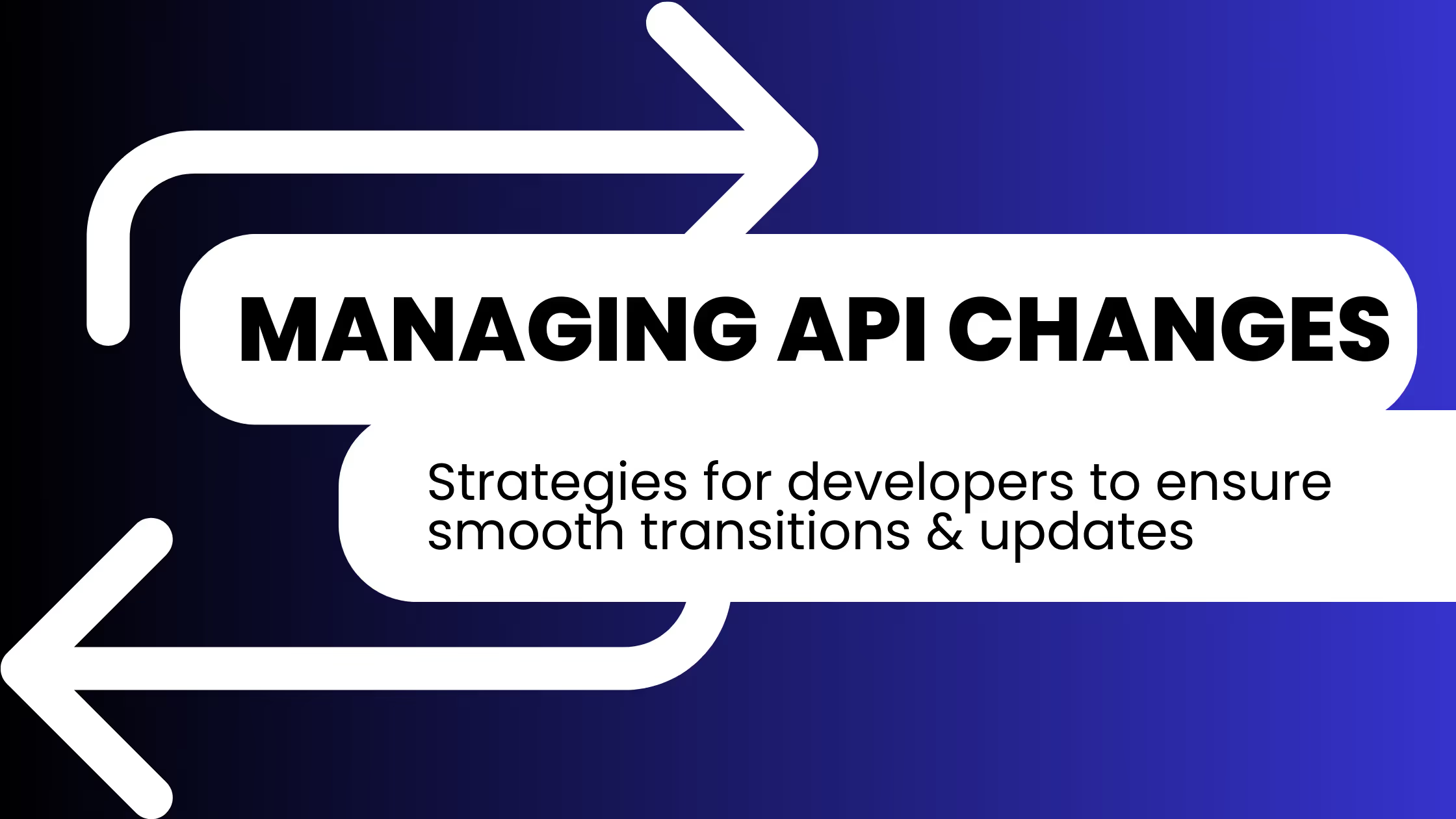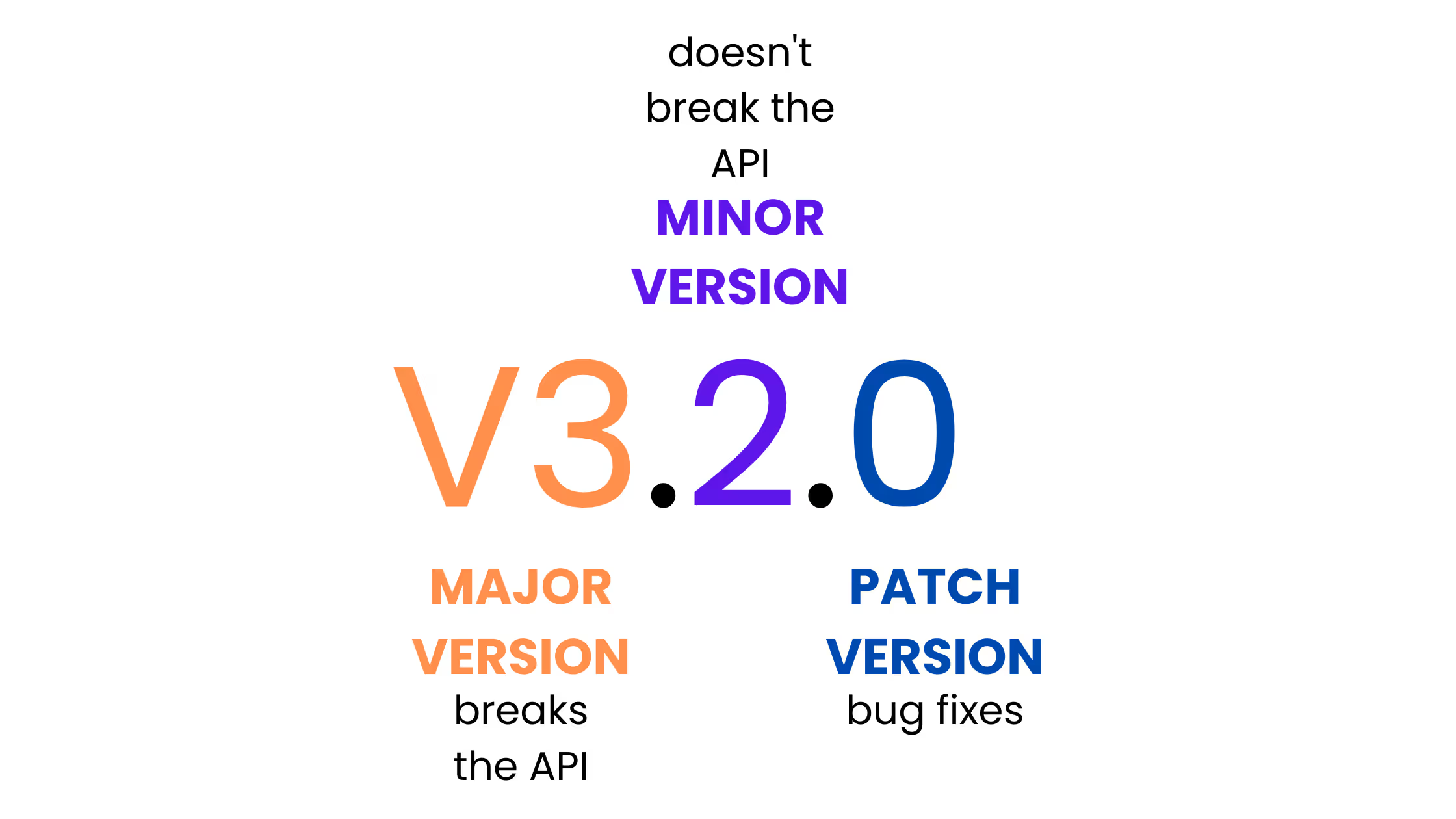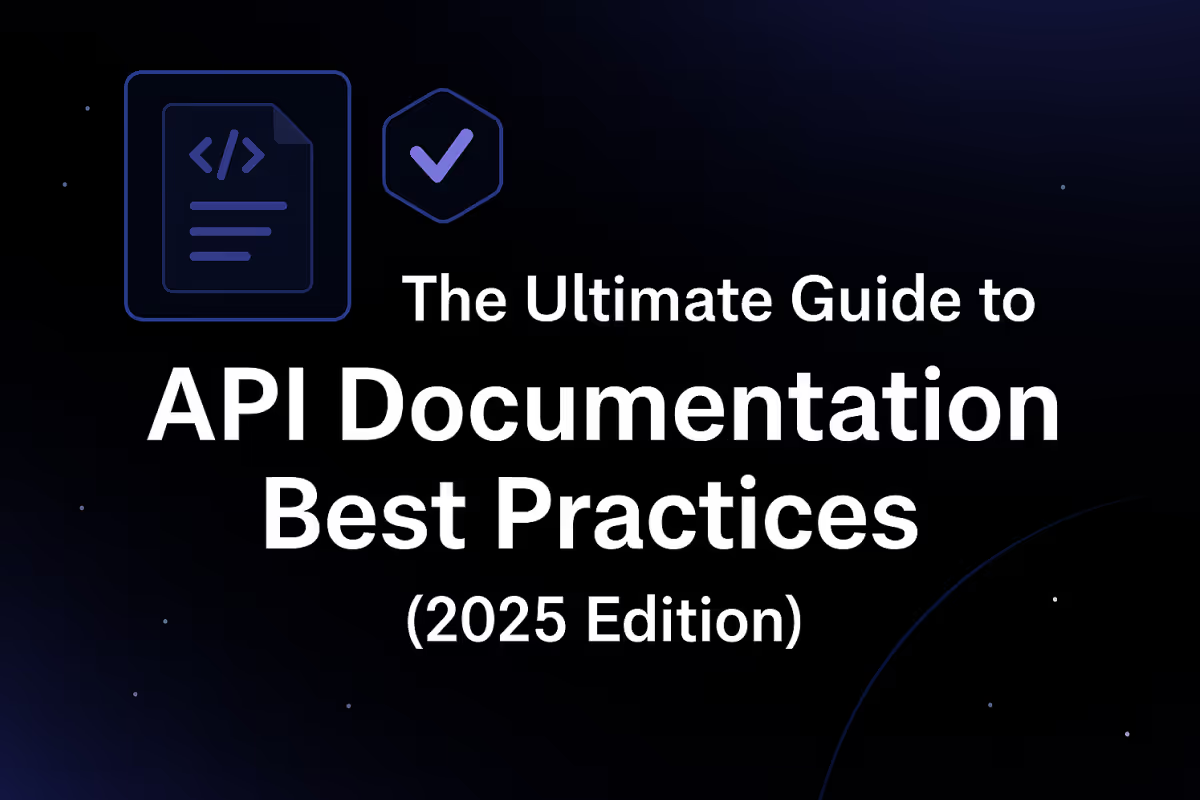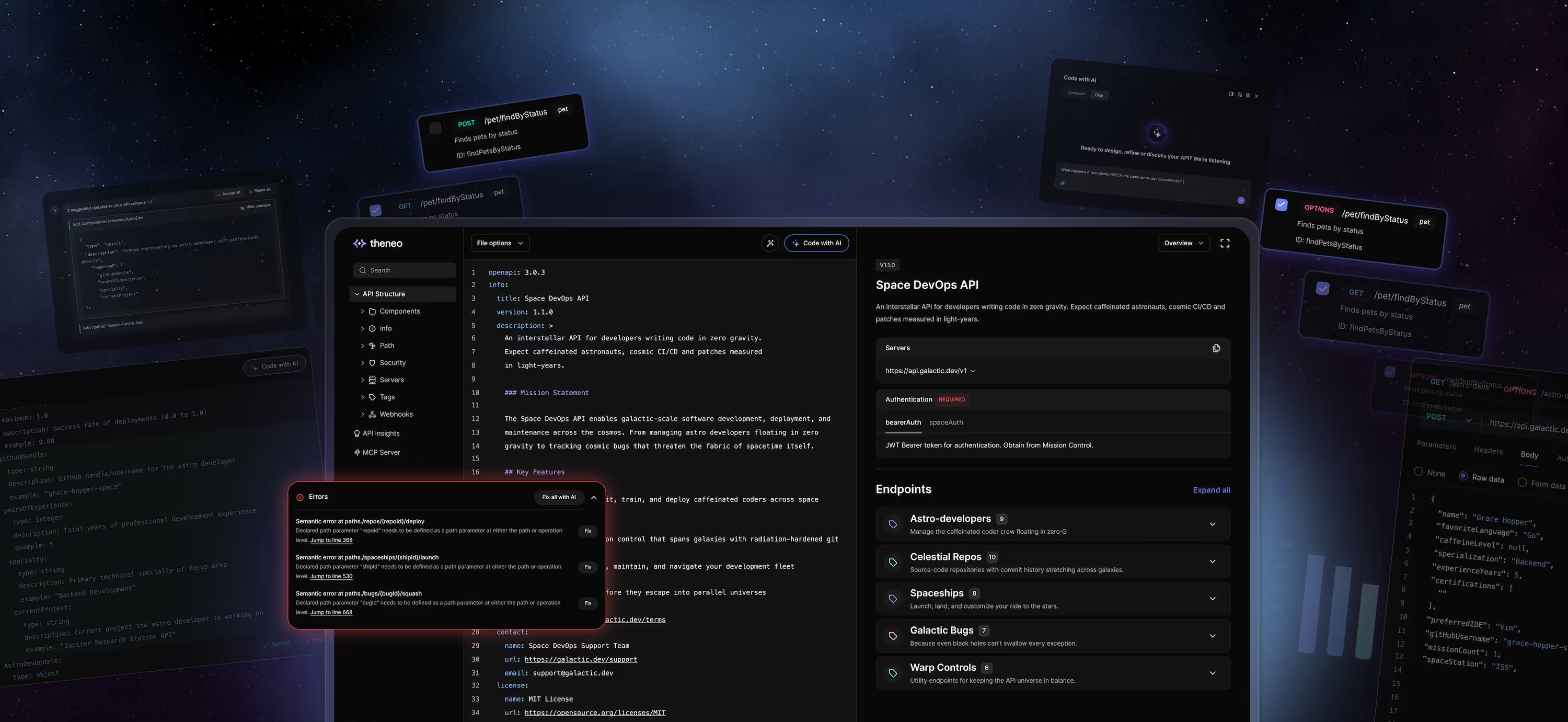Managing API Changes: Strategies for Developers to Ensure Smooth Transitions and Updates
Managing API changes for smooth transitions, stability, and user-friendly apps.

In the dynamic world of software development, APIs serve as important bridges that enable seamless communication between applications and services. API changes are inevitable as applications evolve to meet user needs and introduce enhancements and improvements. These changes are essential when extending the functionality of applications, adding new features, and addressing security concerns. However, managing API changes requires careful planning to ensure stability and user satisfaction. A well-executed approach ensures smooth transitions, minimizes disruption, and promotes a reliable user experience. Neglecting proper API management can lead to compatibility issues and dissatisfied users, jeopardizing the success and reputation of the application.

Common Reasons for Changes

Several factors can trigger API changes:
- Feature Enhancements: To meet growing user demands and remain competitive, APIs may be updated to introduce new features, functionality, or enhancements to existing functionality.
- Bug Fixes: Fixing software bugs and vulnerabilities is an important reason for API changes. Patch updates help improve the overall stability and security of the application.
- Performance Optimization: As applications scale and need to handle higher traffic, API changes can focus on optimizing performance, reducing response times, and improving efficiency.
- Security Enhancements: To ensure the integrity of data and protect against potential threats, API changes can implement security updates, such as improved authentication mechanisms or encryption protocols.
- Deprecation and Sunset: APIs may experience changes because older versions are deprecated or certain features are removed entirely. Developers are advised to migrate to newer versions or alternative APIs to maintain compatibility.
- Compliance and Regulatory Requirements: API changes may be driven by compliance with industry standards, regulatory requirements, or privacy policies.
Understanding the different types of API changes and the reasons behind them is critical for developers to proactively prepare for, implement, and effectively manage transitions. By understanding the impact of API changes on applications, developers can apply appropriate strategies to ensure seamless updates and uninterrupted user experiences.
Preparing for API Changes
Before making changes to an API, developers must take a systematic and well-organized approach to minimize disruption and ensure a smooth transition for both applications and end users. Two fundamental aspects of preparing for API changes are versioning and effective communication and documentation.
Versioning and Semantic Versioning

Version control involves assigning unique labels or numbers to different versions of an API. It helps developers track changes and ensures that applications can adapt to updates without causing compatibility issues. When introducing changes to an API, it can be particularly beneficial to adhere to the principles of semantic versioning:
- Major Version (X.0.0): Raised for backward incompatible changes. Signals significant changes that may require application updates for compatibility reasons.
- Minor Version (X.Y.0): Increases when new features or functionality are added that are backward compatible. Applications using the previous version can incorporate the updates with minimal adjustments.
- Patch Version (X.Y.Z): Increased for backward compatible bug fixes and minor improvements. Patch versions ensure that applications receive important bug fixes without making groundbreaking changes.
Adherence to semantic release policies enables developers to clearly communicate the impact of changes so users can make informed decisions about updating their applications.
Helpful Tools: Git, SVN, Mercurial
Effective Communication and Documentation

Communication is key to managing API changes. Developers must proactively notify users of upcoming changes to give them adequate time to prepare. Communication channels include:
- Developer Notifications: Send clear and timely notifications to API users about planned changes, including scope, impact, and proposed timing. This helps developers stay informed and plan their migration strategy accordingly.
- Changelog Creation: Maintain a detailed and organized change log that documents all API changes. This log should include version information, descriptions of the changes, reasons for the updates, and potentially disruptive changes. This allows developers to quickly understand the impact of updates.
- Clear Documentation Updates: Keep API documentation up to date so that it accurately reflects changes. Comprehensive and accurate documentation is essential for developers to understand how to customize their applications and effectively use new features.
Effective communication and documentation foster transparency and trust between API providers and customers. They enable developers to make informed decisions, accelerate the migration process, and reduce the likelihood of compatibility issues during and after API changes.
Helpful Tools: Theneo, Postman, Swagger
Strategies for Handling API Changes
As software applications and services evolve, APIs are changed to introduce new functionality, fix bugs, improve performance or address security concerns. However, API changes can be challenging to maintain backward compatibility, ensure smooth transitions, and avoid disruption for application users and developers.
Deprecation Policies
Deprecation policies serve as a crucial communication tool between API providers and developers. Clearly defining deprecation guidelines for outdated API versions or functionalities allows developers to plan for the future and make informed decisions about their application's development path. By notifying developers well in advance about deprecation, they have ample time to prepare for migration and adapt their applications to newer versions or alternatives. Additionally, offering a grace period before removing deprecated features provides a smooth transition window, preventing sudden disruptions and giving developers the opportunity to make necessary adjustments to their code.
Maintaining Backward Compatibility
Maintaining backward compatibility is an important principle to ensure that existing applications continue to function seamlessly after API changes. By avoiding changes as much as possible, developers can preserve the functionality of applications based on previous versions of the API. Using versioning and semantic versioning effectively communicates the impact of updates to users so they understand the significance of each change and can plan accordingly. Providing backward-compatible alternatives for deprecated features ensures that developers have a clear path to migrate to newer features without encountering compatibility issues.
Feature Flags and Conditional Code
Feature flags and conditional code provide developers with a powerful means of controlling the introduction of new features and changes. Implementing feature flags allows developers to selectively enable or disable certain features, making it easier to test new features and gather feedback before releasing them to all users. Phasing in changes to a subset of users minimizes disruption, allowing potential issues to be identified and fixed before they affect the entire user base. In addition, using conditional code allows developers to maintain compatibility with different API versions and ensure that applications continue to function correctly regardless of changes to the underlying API.
Updating Client Libraries and SDKs
Updating client libraries and SDKs in light of API changes is essential to maintaining optimal application performance and functionality. Timely updates to client libraries align them with the latest API versions so that developers have access to the latest features and enhancements. Removing outdated API calls from client libraries and adding support for new features simplifies the transition for developers, making it easier for them to adopt the latest API updates. Clear documentation of the changes in the library updates allows developers to stay informed about the modifications and understand how to best use the new features in the API.
Testing and Quality Assurance
Testing and quality assurance play a critical role in processing API changes. They play a critical role in ensuring that changes to the API are implemented correctly, do not introduce regressions or bugs, and maintain the overall integrity and reliability of the application.
Test Coverage for API Changes
Thorough test coverage is essential for API changes. Developers must create a comprehensive set of tests that cover various use cases and scenarios to verify that the API works as expected after the changes. This includes testing both existing functionality and newly introduced features. Automated testing frameworks can be used to perform these tests efficiently and consistently, reducing the risk of human error and improving the speed of the testing process.
Automated Testing and Continuous Integration
Automating the testing process is essential to effectively handle API changes. Continuous integration (CI) ensures that tests are automatically triggered as soon as changes are made to the code base. This allows developers to identify problems early in the development cycle and take corrective action immediately. Automated testing helps catch regressions and ensures that existing functionality works as intended even after API changes are implemented.
Utilizing Sandbox and Staging Environments
Sandbox and staging environments provide developers with isolated areas where they can test API changes without affecting the production environment. These environments closely mimic the production environment, allowing developers to validate changes and evaluate their impact on applications without risking disruption to end users. By thoroughly testing in these controlled environments, developers can safely deploy the changes to the production environment after validation.
Bug Reporting and Handling
Throughout the API change process, developers should encourage users and internal testers to report any bugs or issues they encounter. Prompt resolution of these reported issues is critical to maintaining a smooth user experience and addressing any unintended side effects of the API changes. Bug reports can serve as valuable feedback for future iterations and improvements.
Helpful Tools: SoapUI, Rest-Assured, Postman
Implementing API Changes
Effective implementation of API changes requires careful planning and troubleshooting. A phased migration plan ensures a smooth transition and reduces the risk of unexpected disruptions. By prioritizing robust error handling and exception management, developers can minimize the impact of API changes on application functionality and ensure a seamless experience for end users.
Step-by-step Migration Plan
A phased migration plan is an important roadmap that describes how API changes will be systematically implemented. The plan should consider the following points:
- Identify Impacted Areas: Determine which parts of the application will be affected by the API changes. Understand how the changes will impact existing functionality and integrations.
- Plan for Changes in Endpoints: Update API endpoints, request/response formats, and data structures to reflect the new API design. Ensure changes are consistent with the needs of the application and its users.
- Communication with Stakeholders: Keep all stakeholders, including developers, testers, and project managers, informed of the migration plan. Clearly communicate the schedule, milestones, and potential impact on the application.
Handling Error Responses and Exceptions
Error responses and exceptions play an important role in communicating issues with API interactions. Special attention must be paid to handling errors when implementing API changes:
- Robust Error Handling: Update error responses to be informative and user-friendly. Provide meaningful error messages that help developers and end-users identify the root cause of issues quickly.
- Error Codes and Status Codes: Standardize error codes and HTTP status codes to enable consistent error handling across the application. This ensures that developers can easily identify and handle specific error scenarios.
- Graceful Error Recovery: In the event that API changes result in errors, design the application to be easily recoverable. Implement fallback mechanisms and appropriate error handling strategies to ensure application stability.
- Error Logging and Monitoring: Implement logging and monitoring mechanisms to capture and analyze errors that occur during API interactions. This helps identify and proactively resolve issues and improves overall system reliability.
Rollback Plans and Contingency Measures
Importance of Rollback Plans
Despite careful planning and testing, unforeseen problems can occur during the implementation of API changes. In such cases, a well-defined rollback plan is critical. A rollback plan outlines the steps to return the application to the state it was in before the API changes. This ensures that in the event of significant disruptions or critical errors, developers can quickly restore application functionality to maintain business continuity and minimize downtime.
Rollback Procedure Guidelines
To ensure a smooth and effective rollback process, developers should adhere to the following guidelines:
- Define Trigger Points: Establish clear criteria for when a rollback is required. These trigger points can be based on specific error rates, performance metrics, or user feedback that indicates a serious degradation of application functionality.
- Automate Rollback Procedures: Automate the rollback process as much as possible to reduce the potential for human error. This may include the use of version control systems or deployment tools that allow easy rollback to previous versions.
- Test Rollback Scenarios: Before implementing API changes, run tests to validate the rollback procedure. This allows developers to identify and fix any issues or dependencies that could hinder a successful rollback.
- Monitor and Analyze: Continuously monitor the application during and after API changes to detect early signs of potential problems. Analyze monitoring data to make informed decisions regarding rollback.
- Communicate with Stakeholders: Inform all stakeholders about the possibility of a rollback and its potential impact. Transparent communication allows for better coordination and understanding among team members.
- Learn from Rollbacks: Conduct a thorough post-mortem after a rollback to understand the root causes of the issues. This knowledge can help prevent similar issues in the future and improve the planning and execution of future API changes.
Post-Transition Maintenance
After API changes, post-transition maintenance becomes a critical phase to ensure a smooth user experience and optimize application performance. This phase includes the following key elements:
User Support and FAQ Updates
- Dedicated user support to address queries and concerns.
- Updated FAQs and documentation to guide users through changes.
- Clear instructions on adapting to new features and workflows.
Addressing Post-Migration Issues
- Monitor application performance and user feedback.
- Swiftly address any post-migration bugs or challenges.
- Collaborate with users for feedback and improvements.
By embracing post-transition maintenance as an integral part of the API change process, developers can deliver a reliable and user-centric application that instills confidence in users and ensures lasting success.
In summary, effective API management is critical to managing the complexity of API changes and ensuring the long-term success of software applications. By summarizing key strategies, including versioning, effective communication, deprecation policies, maintaining backward compatibility, using feature flags and updating client libraries, developers can manage API changes with finesse. These strategies enable developers to manage transitions smoothly, minimize disruption, and maintain application stability and reliability. This guide highlights the importance of proper API management and illustrates the value of continuous improvement and adaptability in the ever-evolving landscape of software development. By proactively preparing for API changes, implementing thoughtful strategies, and prioritizing post-transition maintenance, developers can deliver robust, user-friendly applications that stand the test of time and meet the evolving needs of their users.
In the dynamic world of software development, APIs serve as important bridges that enable seamless communication between applications and services. API changes are inevitable as applications evolve to meet user needs and introduce enhancements and improvements. These changes are essential when extending the functionality of applications, adding new features, and addressing security concerns. However, managing API changes requires careful planning to ensure stability and user satisfaction. A well-executed approach ensures smooth transitions, minimizes disruption, and promotes a reliable user experience. Neglecting proper API management can lead to compatibility issues and dissatisfied users, jeopardizing the success and reputation of the application.

Common Reasons for Changes

Several factors can trigger API changes:
- Feature Enhancements: To meet growing user demands and remain competitive, APIs may be updated to introduce new features, functionality, or enhancements to existing functionality.
- Bug Fixes: Fixing software bugs and vulnerabilities is an important reason for API changes. Patch updates help improve the overall stability and security of the application.
- Performance Optimization: As applications scale and need to handle higher traffic, API changes can focus on optimizing performance, reducing response times, and improving efficiency.
- Security Enhancements: To ensure the integrity of data and protect against potential threats, API changes can implement security updates, such as improved authentication mechanisms or encryption protocols.
- Deprecation and Sunset: APIs may experience changes because older versions are deprecated or certain features are removed entirely. Developers are advised to migrate to newer versions or alternative APIs to maintain compatibility.
- Compliance and Regulatory Requirements: API changes may be driven by compliance with industry standards, regulatory requirements, or privacy policies.
Understanding the different types of API changes and the reasons behind them is critical for developers to proactively prepare for, implement, and effectively manage transitions. By understanding the impact of API changes on applications, developers can apply appropriate strategies to ensure seamless updates and uninterrupted user experiences.
Preparing for API Changes
Before making changes to an API, developers must take a systematic and well-organized approach to minimize disruption and ensure a smooth transition for both applications and end users. Two fundamental aspects of preparing for API changes are versioning and effective communication and documentation.
Versioning and Semantic Versioning

Version control involves assigning unique labels or numbers to different versions of an API. It helps developers track changes and ensures that applications can adapt to updates without causing compatibility issues. When introducing changes to an API, it can be particularly beneficial to adhere to the principles of semantic versioning:
- Major Version (X.0.0): Raised for backward incompatible changes. Signals significant changes that may require application updates for compatibility reasons.
- Minor Version (X.Y.0): Increases when new features or functionality are added that are backward compatible. Applications using the previous version can incorporate the updates with minimal adjustments.
- Patch Version (X.Y.Z): Increased for backward compatible bug fixes and minor improvements. Patch versions ensure that applications receive important bug fixes without making groundbreaking changes.
Adherence to semantic release policies enables developers to clearly communicate the impact of changes so users can make informed decisions about updating their applications.
Helpful Tools: Git, SVN, Mercurial
Effective Communication and Documentation

Communication is key to managing API changes. Developers must proactively notify users of upcoming changes to give them adequate time to prepare. Communication channels include:
- Developer Notifications: Send clear and timely notifications to API users about planned changes, including scope, impact, and proposed timing. This helps developers stay informed and plan their migration strategy accordingly.
- Changelog Creation: Maintain a detailed and organized change log that documents all API changes. This log should include version information, descriptions of the changes, reasons for the updates, and potentially disruptive changes. This allows developers to quickly understand the impact of updates.
- Clear Documentation Updates: Keep API documentation up to date so that it accurately reflects changes. Comprehensive and accurate documentation is essential for developers to understand how to customize their applications and effectively use new features.
Effective communication and documentation foster transparency and trust between API providers and customers. They enable developers to make informed decisions, accelerate the migration process, and reduce the likelihood of compatibility issues during and after API changes.
Helpful Tools: Theneo, Postman, Swagger
Strategies for Handling API Changes
As software applications and services evolve, APIs are changed to introduce new functionality, fix bugs, improve performance or address security concerns. However, API changes can be challenging to maintain backward compatibility, ensure smooth transitions, and avoid disruption for application users and developers.
Deprecation Policies
Deprecation policies serve as a crucial communication tool between API providers and developers. Clearly defining deprecation guidelines for outdated API versions or functionalities allows developers to plan for the future and make informed decisions about their application's development path. By notifying developers well in advance about deprecation, they have ample time to prepare for migration and adapt their applications to newer versions or alternatives. Additionally, offering a grace period before removing deprecated features provides a smooth transition window, preventing sudden disruptions and giving developers the opportunity to make necessary adjustments to their code.
Maintaining Backward Compatibility
Maintaining backward compatibility is an important principle to ensure that existing applications continue to function seamlessly after API changes. By avoiding changes as much as possible, developers can preserve the functionality of applications based on previous versions of the API. Using versioning and semantic versioning effectively communicates the impact of updates to users so they understand the significance of each change and can plan accordingly. Providing backward-compatible alternatives for deprecated features ensures that developers have a clear path to migrate to newer features without encountering compatibility issues.
Feature Flags and Conditional Code
Feature flags and conditional code provide developers with a powerful means of controlling the introduction of new features and changes. Implementing feature flags allows developers to selectively enable or disable certain features, making it easier to test new features and gather feedback before releasing them to all users. Phasing in changes to a subset of users minimizes disruption, allowing potential issues to be identified and fixed before they affect the entire user base. In addition, using conditional code allows developers to maintain compatibility with different API versions and ensure that applications continue to function correctly regardless of changes to the underlying API.
Updating Client Libraries and SDKs
Updating client libraries and SDKs in light of API changes is essential to maintaining optimal application performance and functionality. Timely updates to client libraries align them with the latest API versions so that developers have access to the latest features and enhancements. Removing outdated API calls from client libraries and adding support for new features simplifies the transition for developers, making it easier for them to adopt the latest API updates. Clear documentation of the changes in the library updates allows developers to stay informed about the modifications and understand how to best use the new features in the API.
Testing and Quality Assurance
Testing and quality assurance play a critical role in processing API changes. They play a critical role in ensuring that changes to the API are implemented correctly, do not introduce regressions or bugs, and maintain the overall integrity and reliability of the application.
Test Coverage for API Changes
Thorough test coverage is essential for API changes. Developers must create a comprehensive set of tests that cover various use cases and scenarios to verify that the API works as expected after the changes. This includes testing both existing functionality and newly introduced features. Automated testing frameworks can be used to perform these tests efficiently and consistently, reducing the risk of human error and improving the speed of the testing process.
Automated Testing and Continuous Integration
Automating the testing process is essential to effectively handle API changes. Continuous integration (CI) ensures that tests are automatically triggered as soon as changes are made to the code base. This allows developers to identify problems early in the development cycle and take corrective action immediately. Automated testing helps catch regressions and ensures that existing functionality works as intended even after API changes are implemented.
Utilizing Sandbox and Staging Environments
Sandbox and staging environments provide developers with isolated areas where they can test API changes without affecting the production environment. These environments closely mimic the production environment, allowing developers to validate changes and evaluate their impact on applications without risking disruption to end users. By thoroughly testing in these controlled environments, developers can safely deploy the changes to the production environment after validation.
Bug Reporting and Handling
Throughout the API change process, developers should encourage users and internal testers to report any bugs or issues they encounter. Prompt resolution of these reported issues is critical to maintaining a smooth user experience and addressing any unintended side effects of the API changes. Bug reports can serve as valuable feedback for future iterations and improvements.
Helpful Tools: SoapUI, Rest-Assured, Postman
Implementing API Changes
Effective implementation of API changes requires careful planning and troubleshooting. A phased migration plan ensures a smooth transition and reduces the risk of unexpected disruptions. By prioritizing robust error handling and exception management, developers can minimize the impact of API changes on application functionality and ensure a seamless experience for end users.
Step-by-step Migration Plan
A phased migration plan is an important roadmap that describes how API changes will be systematically implemented. The plan should consider the following points:
- Identify Impacted Areas: Determine which parts of the application will be affected by the API changes. Understand how the changes will impact existing functionality and integrations.
- Plan for Changes in Endpoints: Update API endpoints, request/response formats, and data structures to reflect the new API design. Ensure changes are consistent with the needs of the application and its users.
- Communication with Stakeholders: Keep all stakeholders, including developers, testers, and project managers, informed of the migration plan. Clearly communicate the schedule, milestones, and potential impact on the application.
Handling Error Responses and Exceptions
Error responses and exceptions play an important role in communicating issues with API interactions. Special attention must be paid to handling errors when implementing API changes:
- Robust Error Handling: Update error responses to be informative and user-friendly. Provide meaningful error messages that help developers and end-users identify the root cause of issues quickly.
- Error Codes and Status Codes: Standardize error codes and HTTP status codes to enable consistent error handling across the application. This ensures that developers can easily identify and handle specific error scenarios.
- Graceful Error Recovery: In the event that API changes result in errors, design the application to be easily recoverable. Implement fallback mechanisms and appropriate error handling strategies to ensure application stability.
- Error Logging and Monitoring: Implement logging and monitoring mechanisms to capture and analyze errors that occur during API interactions. This helps identify and proactively resolve issues and improves overall system reliability.
Rollback Plans and Contingency Measures
Importance of Rollback Plans
Despite careful planning and testing, unforeseen problems can occur during the implementation of API changes. In such cases, a well-defined rollback plan is critical. A rollback plan outlines the steps to return the application to the state it was in before the API changes. This ensures that in the event of significant disruptions or critical errors, developers can quickly restore application functionality to maintain business continuity and minimize downtime.
Rollback Procedure Guidelines
To ensure a smooth and effective rollback process, developers should adhere to the following guidelines:
- Define Trigger Points: Establish clear criteria for when a rollback is required. These trigger points can be based on specific error rates, performance metrics, or user feedback that indicates a serious degradation of application functionality.
- Automate Rollback Procedures: Automate the rollback process as much as possible to reduce the potential for human error. This may include the use of version control systems or deployment tools that allow easy rollback to previous versions.
- Test Rollback Scenarios: Before implementing API changes, run tests to validate the rollback procedure. This allows developers to identify and fix any issues or dependencies that could hinder a successful rollback.
- Monitor and Analyze: Continuously monitor the application during and after API changes to detect early signs of potential problems. Analyze monitoring data to make informed decisions regarding rollback.
- Communicate with Stakeholders: Inform all stakeholders about the possibility of a rollback and its potential impact. Transparent communication allows for better coordination and understanding among team members.
- Learn from Rollbacks: Conduct a thorough post-mortem after a rollback to understand the root causes of the issues. This knowledge can help prevent similar issues in the future and improve the planning and execution of future API changes.
Post-Transition Maintenance
After API changes, post-transition maintenance becomes a critical phase to ensure a smooth user experience and optimize application performance. This phase includes the following key elements:
User Support and FAQ Updates
- Dedicated user support to address queries and concerns.
- Updated FAQs and documentation to guide users through changes.
- Clear instructions on adapting to new features and workflows.
Addressing Post-Migration Issues
- Monitor application performance and user feedback.
- Swiftly address any post-migration bugs or challenges.
- Collaborate with users for feedback and improvements.
By embracing post-transition maintenance as an integral part of the API change process, developers can deliver a reliable and user-centric application that instills confidence in users and ensures lasting success.
In summary, effective API management is critical to managing the complexity of API changes and ensuring the long-term success of software applications. By summarizing key strategies, including versioning, effective communication, deprecation policies, maintaining backward compatibility, using feature flags and updating client libraries, developers can manage API changes with finesse. These strategies enable developers to manage transitions smoothly, minimize disruption, and maintain application stability and reliability. This guide highlights the importance of proper API management and illustrates the value of continuous improvement and adaptability in the ever-evolving landscape of software development. By proactively preparing for API changes, implementing thoughtful strategies, and prioritizing post-transition maintenance, developers can deliver robust, user-friendly applications that stand the test of time and meet the evolving needs of their users.






.avif)


